Table of Contents
Tissues are groups of simple cells working together to perform specific functions in the body. These cells, with similar structures and purposes, work together to create organs and maintain bodily structures. For instance, muscle tissues enable moment, while nerve tissues transmit signals. Tissues play a vital role in preserving overall health by ensuring proper function. They form the foundation for organs, allowing them to carry out their designated tasks, and contributing to the harmonious operation of bodily systems. The intricate collaboration of tissues is fundamental for sustaining life and supporting the various functions that keep the body in balance.
What are Connective Tissues?
The connective tissues are like the body’s “glue”, holding everything together. They provide structural support, connecting and supporting various organs and body parts. They are somewhat like the scaffolding in a building, giving shape and strength to different tissues. Collagen and elastin fibers in connective tissues add durability and flexibility, like the framework and rubber bands in a structure. These tissues also play a crucial role in transporting nutrients, waste removal, and immune system response.
Examples include tendons that connect muscles to bones, ligaments that connect bones, and even the soft padding beneath your skin. essentially, connective tissues keep our bodies intact, ensuring that all the pieces work together harmoniously.
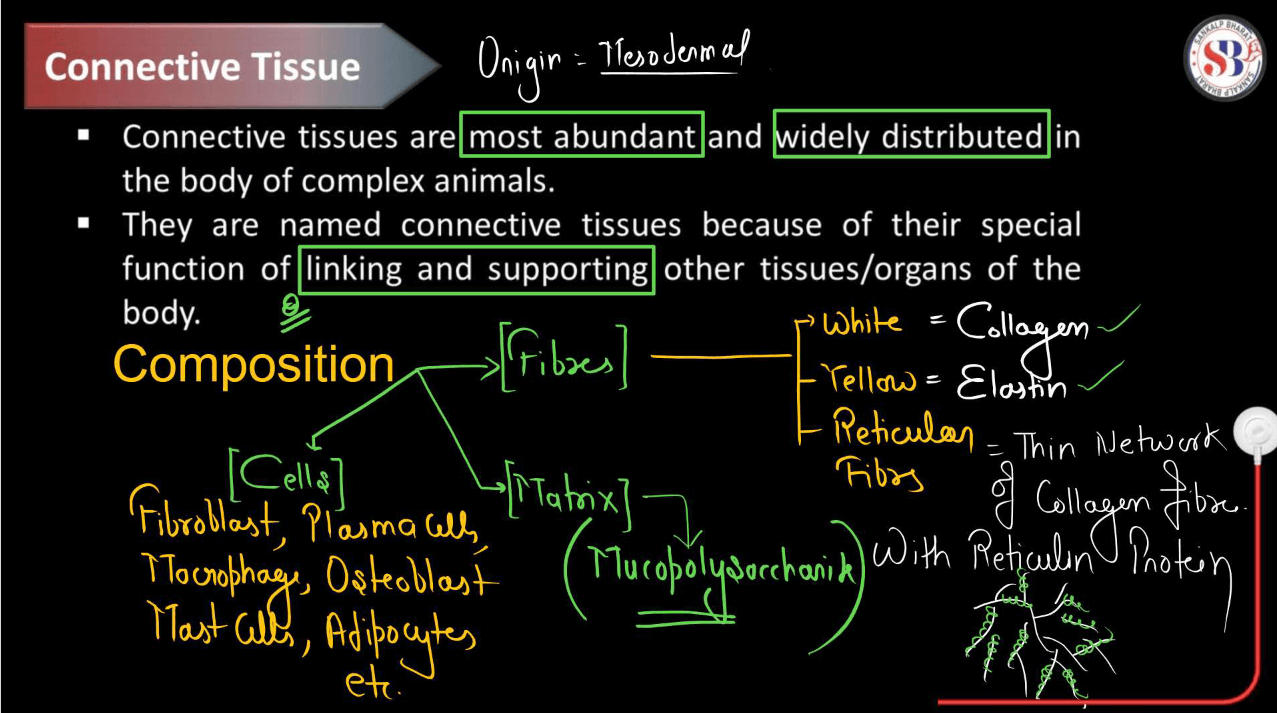
Structure of Connective Tissues
Connective tissues provide support and structure to the body. They consist of cells and extracellular matrix. The cells, like fibroblasts, produce proteins such as collagen and elastin, forming the matrix. Collagen gives strength, while elastin provides elasticity. Ground substance, a gel-like material, fills the space between cells and
Types of Connective Tissues
Connective Tissues are classified into three main types namely: Loose Connective Tissues, Dense Connective Tissues, and Specialized Connective Tissues. These classifications are based on their structure and function. These tissues collectively provide support, protection, and insulation, and play vital roles in various physiological processes in the body.
| Different Types of Connective Tissues | |
| Types | Description |
| Loose Connective Tissues | Loose connective tissues, like areolar and adipose, provide flexible support. Aerolar tissues have various cells and fibers, while adipose tissues store fat for insulation and cushioning. |
| Dense Connective Tissues | Dense connective tissues, such as tendons and ligaments, offer strong support. Collagen fibers are tightly packed, providing resilience and resistance to stretching in specific directions. |
| Specialized Connective Tissues | Specialized connective tissues include blood and lymphoid tissues. Blood transports nutrients and oxygen, while lymphoid tissues, like lymph nodes, play a crucial role in immune response. |
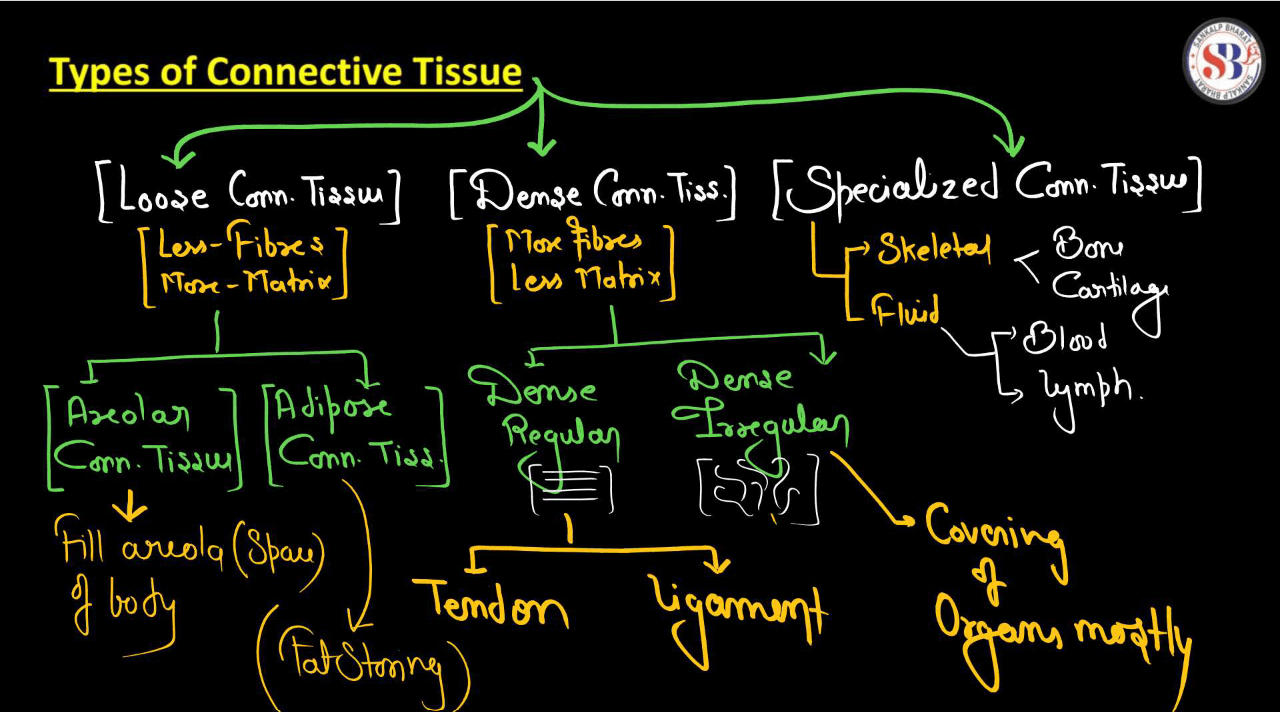
Loose Connective Tissues
Loose connective tissue is a flexible and widespread type of body tissue that supports, surrounds, and connects various structures. Comprising cells, fibers, and ground substance, it provides a framework for organs and allows movement. Its flexibility enables organs to stretch and recoil. Collagen and elastin fibers within the tissue contribute to its strength and elasticity. Found throughout the body, this tissue plays a crucial role in maintaining the structural integrity of organs, facilitating movement, and supporting blood vessels and nerves. Examples include areolar tissue, which cushions organs, and adipose tissue, responsible for storing fat.
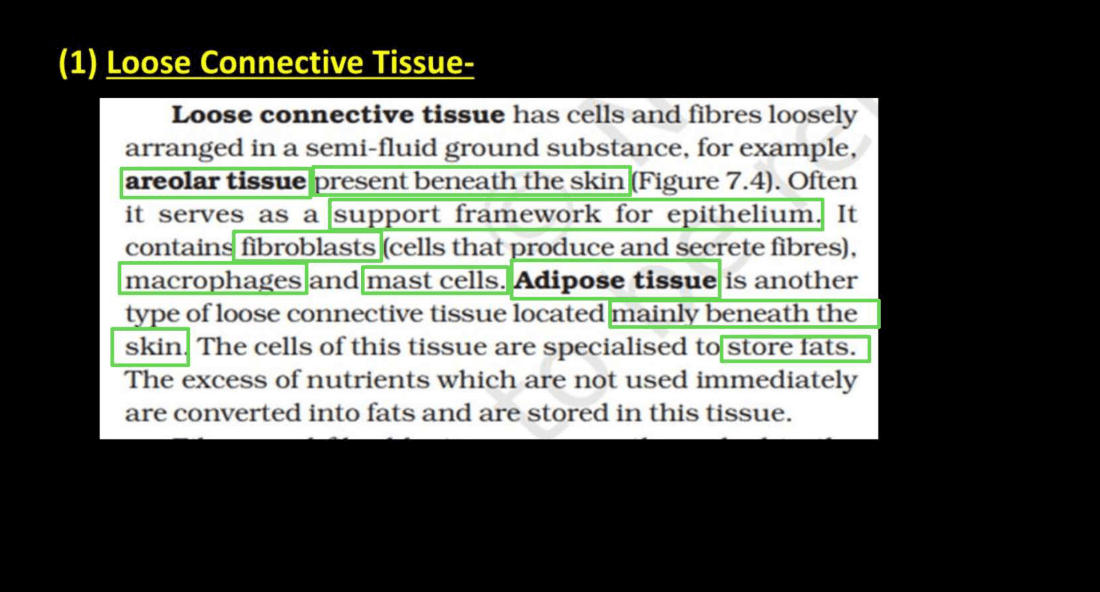
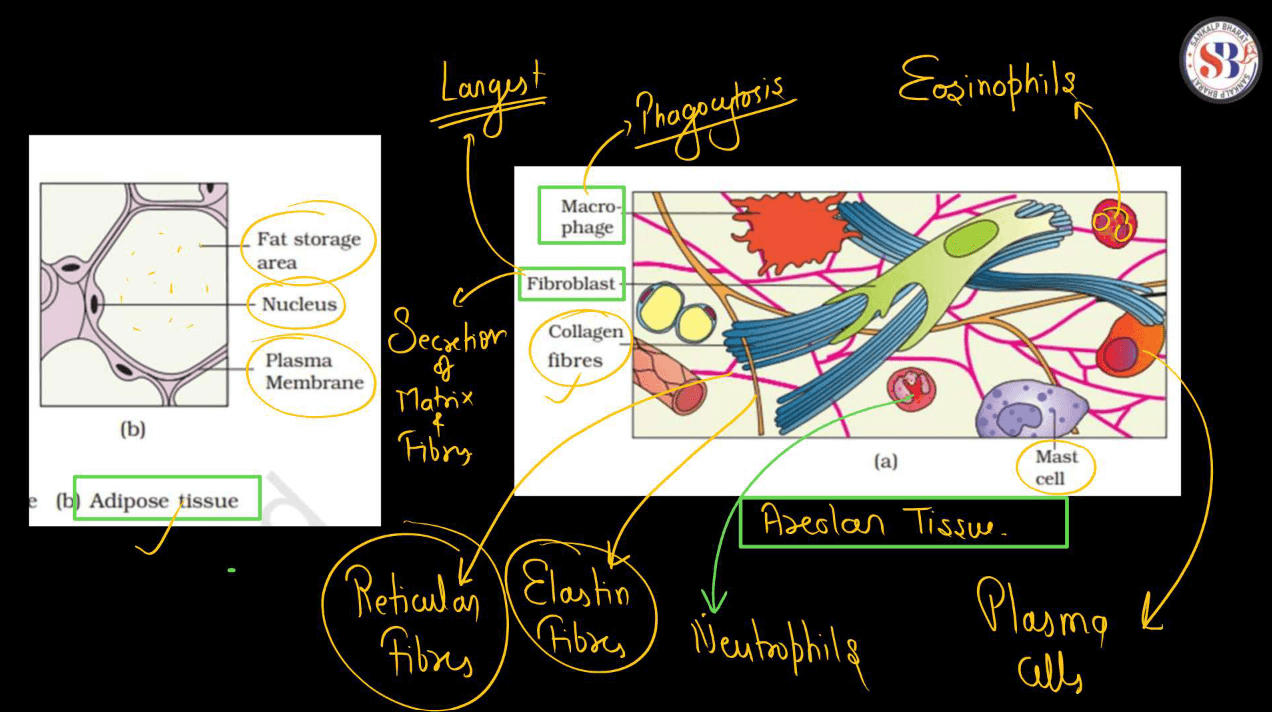
Dense Connective Tissues
Dense connective tissue is a sturdy and compact type of bodily tissue that strengthens and binds different structures together. It consists of densely packed collagen fibers, providing robust support and resistance to tension. This tissue forms tendons, which connect muscles to bones, and ligaments, attaching bones to other bones. Its dense composition contributes to durability and helps maintain the structural stability of joints. While not as flexible as loose connective tissue, dense connective tissue excels in providing strength and support, which is crucial for tasks like transmitting muscle forces and stabilizing skeletal components. Overall, it plays a key role in ensuring the body’s stability and functional integrity.
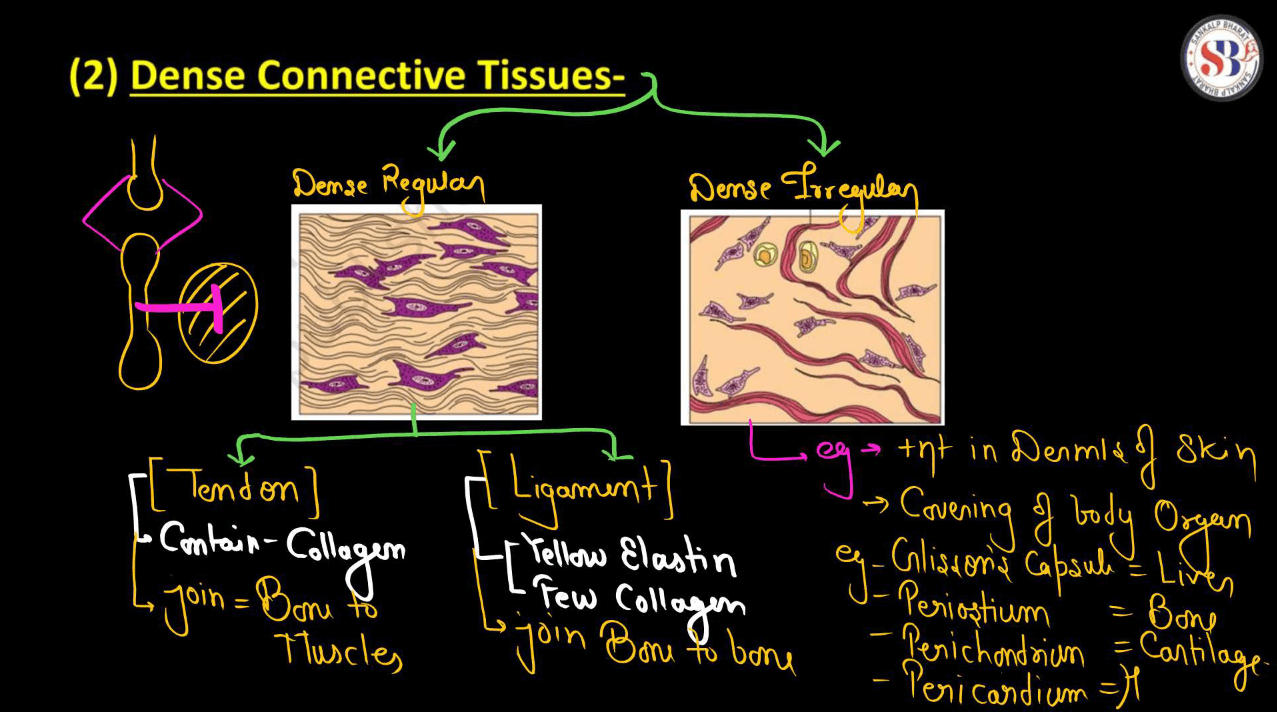
Specialized Connective Tissues
Specialized connective tissues are distinct types of connective tissues with specific functions tailored to particular body needs. Cartilage, for instance, provides firm support and flexibility, found in structures like the nose and ears. Bone tissues, composed of a mineralized matrix, give strength and support to the skeletal system. Blood, classified as a connective tissue, transports oxygen, nutrients, and waste products throughout the body. Adipose tissue, or fat, stores energy and cushions organs. Each specialized connective tissue serves a unique purpose, contributing to the overall structure, and functions, showcasing the diverse roles of specialized connective tissue in maintaining our body’s form and supporting essential physiological processes.
Types of Specialized Connective Tissues
There are mainly Three different types of specialized connective tissues namely: Cartilage, Bone.
| Different Types of Specialized Connective Tissues | |
| Types | Description |
| Cartilage | Cartilage is a flexible, connective tissue found in joints and various body structures. It provides support, reduces friction, and aids in smooth joint movement. |
| Bone | Bones are rigid, mineralized structures forming the skeleton, supporting the body, protecting organs, and facilitating movement through joints. They also produce blood cells and store minerals. |
Cartilage
Cartilage is a flexible, rubbery connective tissue found in the human body. It provides structural support to various parts, like joints and the nose. Composed of cells called chondrocytes and a gel-like matrix, cartilage lacks blood vessels, relying on diffusion for nutrients. Its pliability allows for smooth joint movements, acting as a cushion between bones. While resilient, cartilage has limited self-repair capabilities compared to other tissues. Commonly found in the ears, nose, and joints, it plays a crucial role in maintaining skeletal integrity and facilitating fluid body movements.
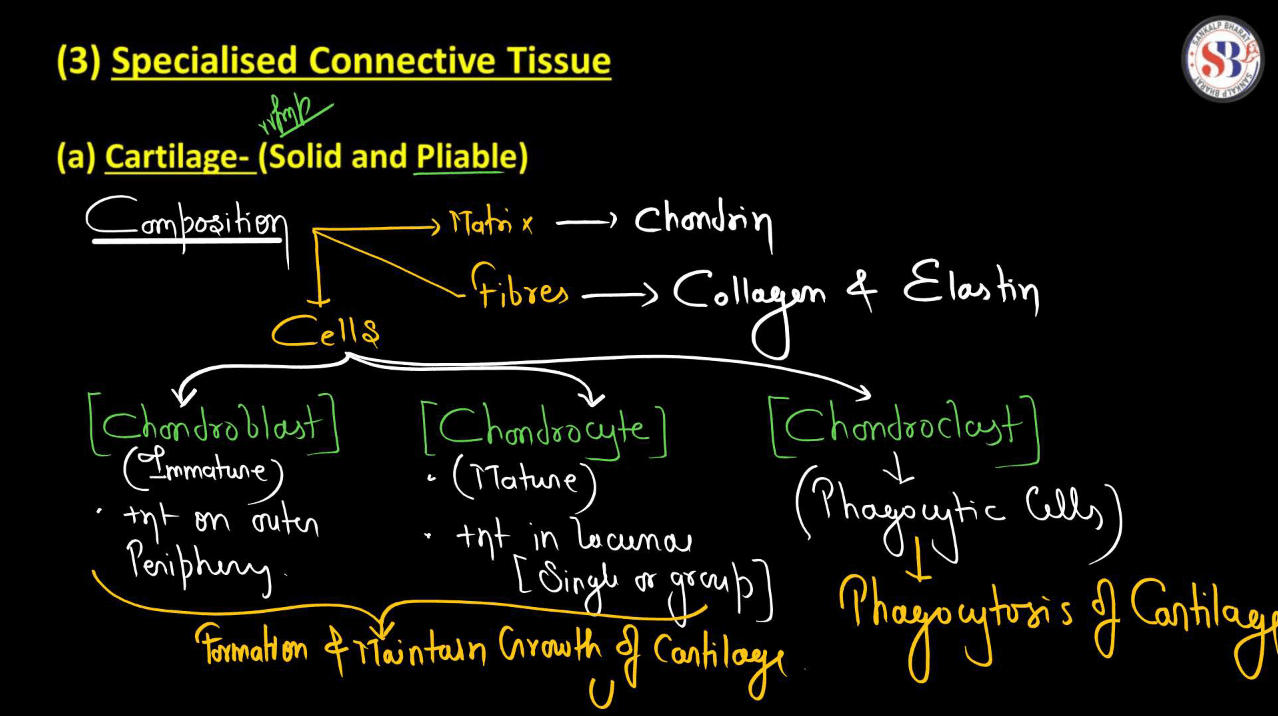
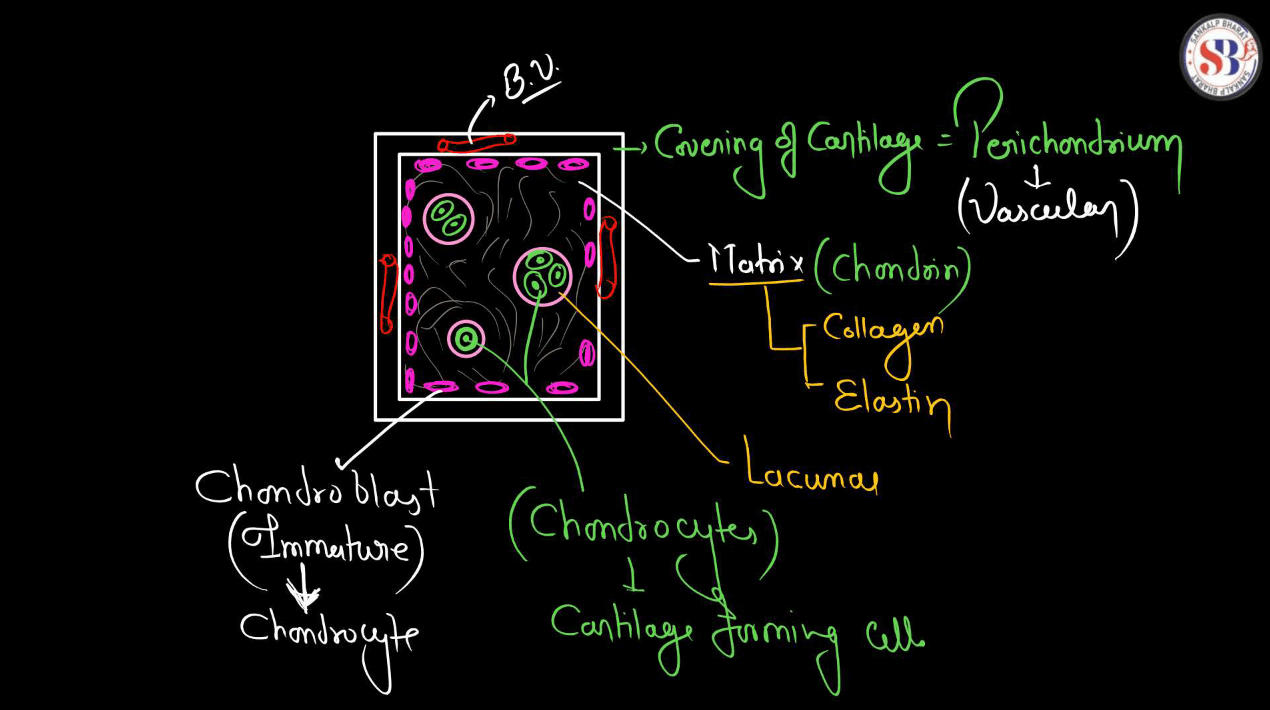
Types of Cartilage
There are three main types of cartilage in the human body, which are named: Hyaline cartilage, Elastic cartilage, and Fibrocartilage.
- Hyaline Cartilage: The most common type, found in joints, the nose, and the respiratory passages. It provides a smooth surface for joint movement and flexibility to structures like the nose.
- Elastic Cartilage: More flexible due to the presence of elastic fibers, found in the external ear and parts of the larynx. It maintains shape while allowing for flexibility and resilience.
- Fibrocartilage: With a dense network of collagen fibers, it’s found in areas requiring strength and rigidity, like intervertebral discs and the knee meniscus. Fibrocartilage absorbs shock and provides stability to joints.
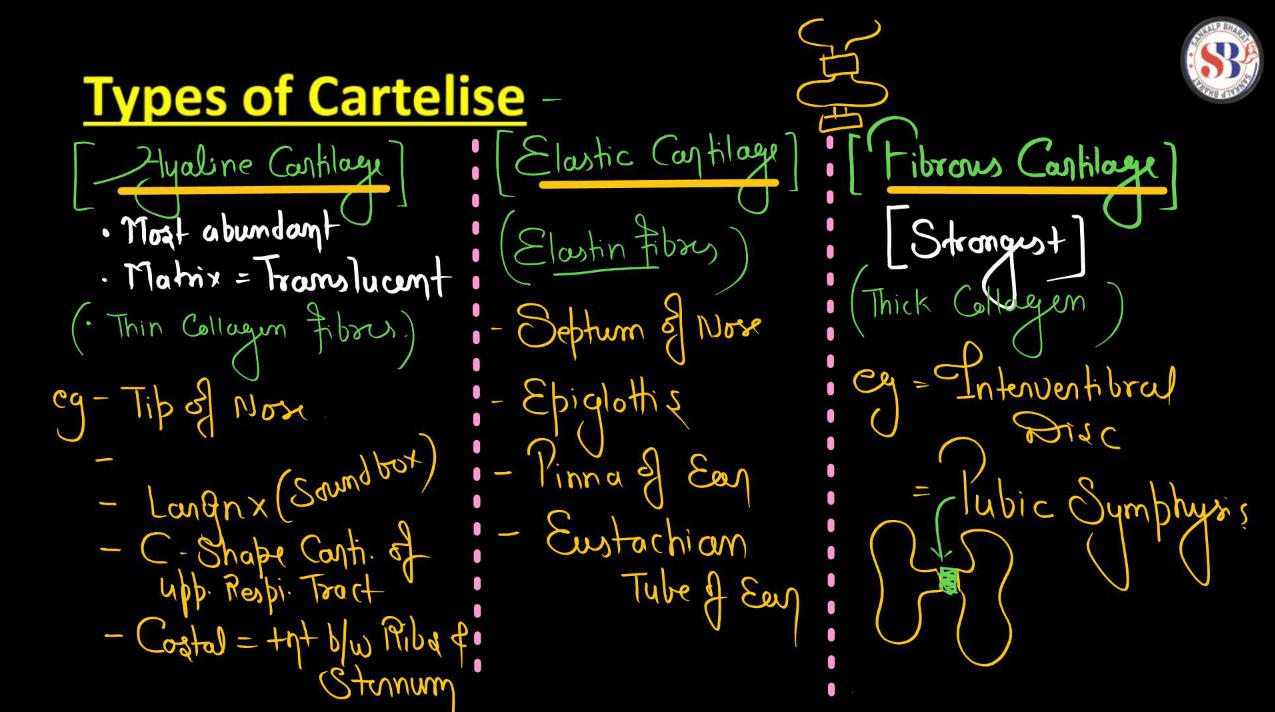
Bones
Bones are the sturdy, rigid structures that form the framework of the human or animal body. Composed mainly of minerals and collagen, bones provide support, protect vital organs, and serve as anchors for muscles. They also house bone marrow, where blood cells are produced. Bones come in various shapes and sizes, adapting to different functions – long bones support weight, flat bones shield organs, and short bones provide stability. Despite their hardness, bones are dynamic and undergo constant remodeling, responding to stress and growth. Overall, bones play a crucial role in maintaining the body’s structure, integrity, and functionality.
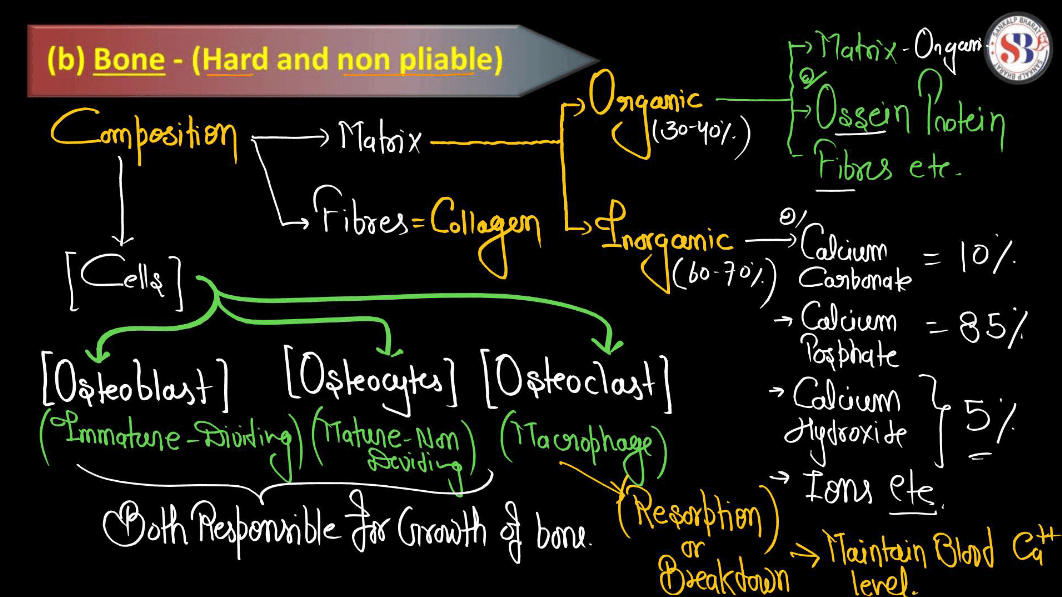
Structure of Compact Bones
Compact bones, found in the outer layer of bones, have a dense and solid structure. They consist of osteons, like tree rings, each containing concentric layers called lamellae. Haversian canals run through these layers, housing blood vessels and nerves. Osteocytes, bone cells, reside in tiny spaces called lacunae. Canaliculi connect lacunae, facilitating nutrient exchange. This compact arrangement provides strength and support, crucial for the skeletal framework and overall body function.
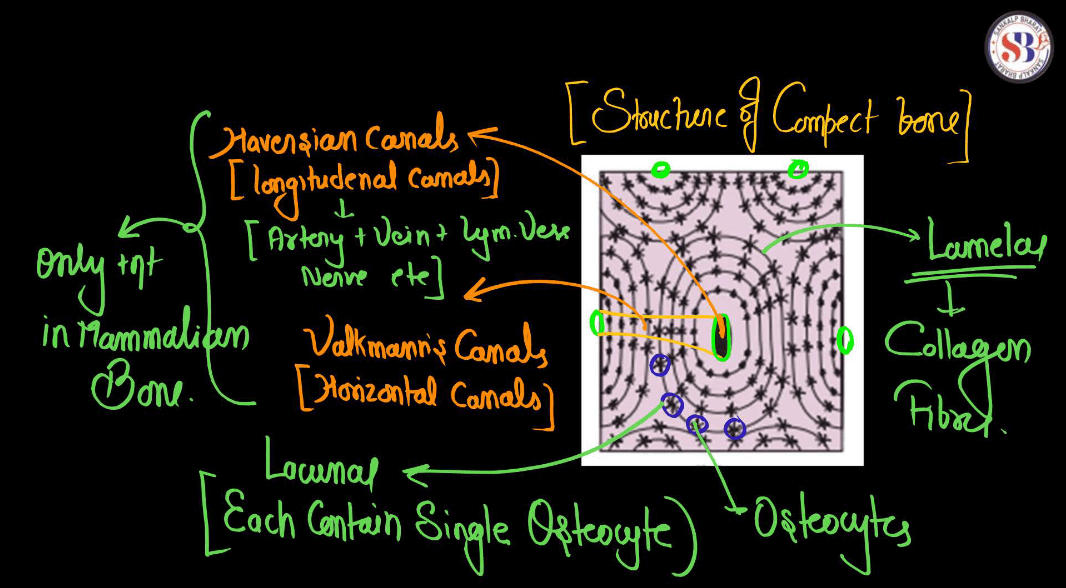
Structure of Long Bones
Long bones, like those in our limbs, have a straightforward structure designed for support and movement. They consist of a shaft (diaphysis) with compact bone, providing strength. The ends (epiphyses) have spongy bone, offering flexibility and facilitating joint function. Growth occurs at the growth plates (epiphyseal plates) until adulthood. Bone marrow within the shaft produces blood cells. Altogether, long bones form a resilient and adaptive foundation for our bodies, enabling us to engage in various activities.
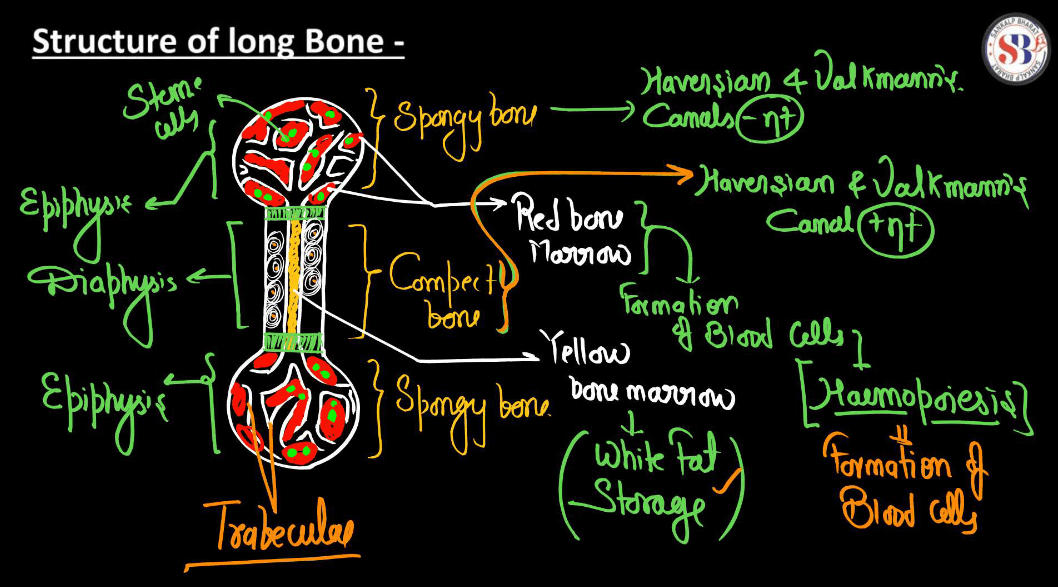
Watch the complete video on Connective Tissues for better understanding:
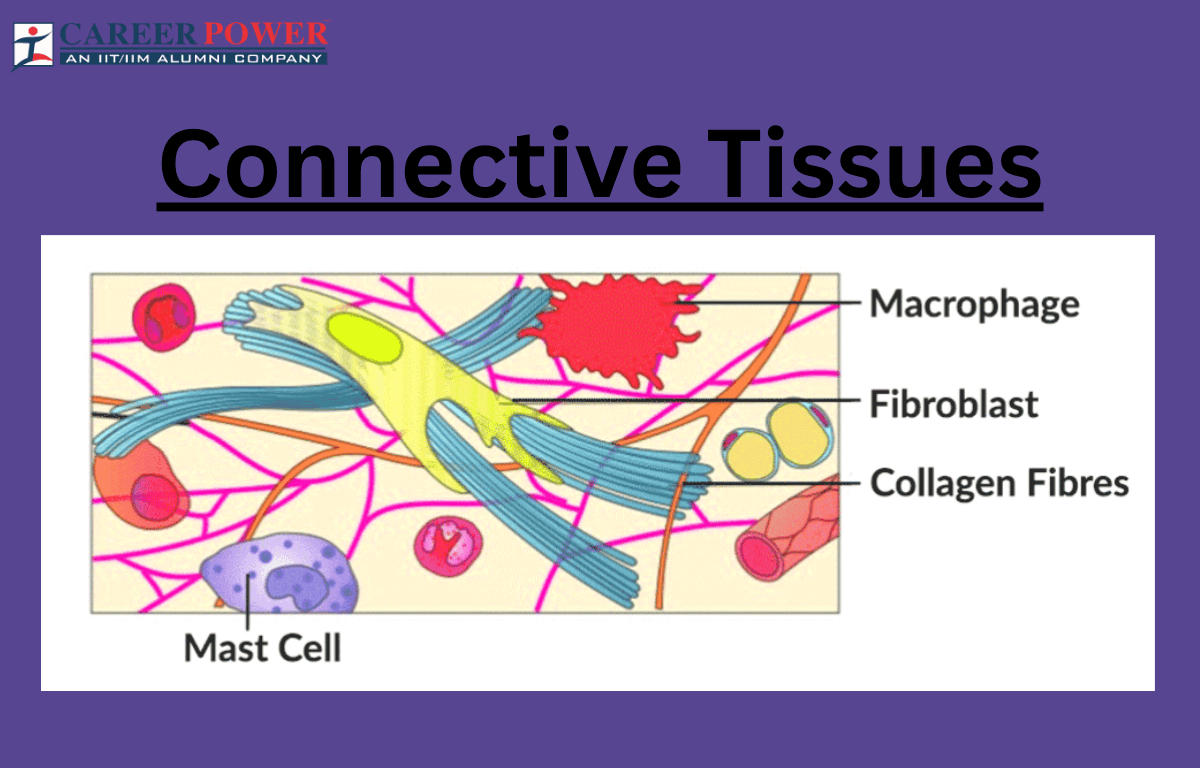
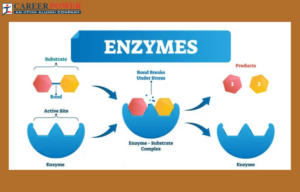 Enzymes: Definition, Functions, and thei...
Enzymes: Definition, Functions, and thei...
 Plants Stems - Structure, Function of a ...
Plants Stems - Structure, Function of a ...
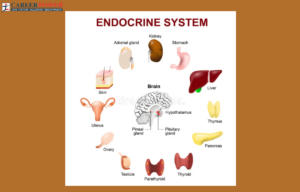 Human Endocrine System, List of Endocrin...
Human Endocrine System, List of Endocrin...
